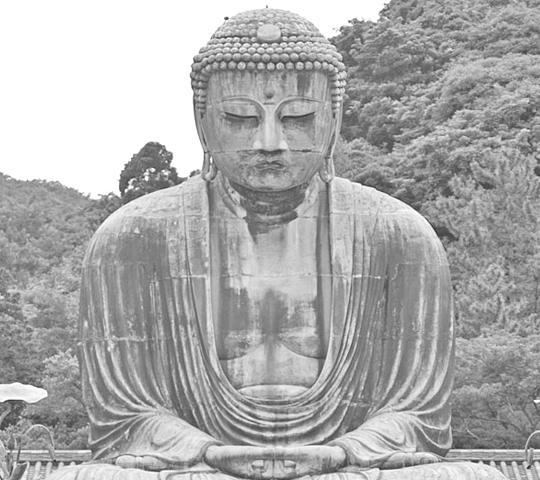Deciphering the Four Noble Truths
May 7, 2010
Nirvana was a grunge band in the 90s. It is also the name for when a Buddhist reaches Enlightenment. The fourth largest religion in the world, Buddhism, originated in India but is now mostly practiced in China, Japan and other parts of southeast Asia.
Professor Barry Crawford, a professor of religion and philosophy, explained the story of Buddhism’s founder Siddhartha Gautama, who was an Indian prince of the Sakya Clan, lived from 563-483 B.C. His father kept him locked in the palace because he wanted his son to be a great political leader, not a great religious leader. It had been prophesized that he could be either. Siddhartha escaped and witnessed the four passing sights: an elderly person, a sick person, a corpse and a monk meditating.
“How much of this story is true we don’t know,” said Crawford.
Disturbed by this, Siddhartha ran away to find inner peace. He practiced every technique he could think of to find peace. He became the Buddha and became enlightened.
He also discovered the four noble truths. The first noble truth is that all of life is suffering. Next, we suffer because we thirst to have things we cannot get. The next noble truth is that we can stop this suffering. The fourth is that by following the eight fold path you can stop this suffering. The eight fold path includes right thinking, right attitude, right effort and right livelihood, for example.
“In Buddhism, you have to know and internalize the four noble truths,” said Crawford. “You have to realize everything is impermanent and nothing lasts. For example, you want to be young forever and that can’t be.”
Crawford explained that in Buddhism thirsting for yourself causes the most suffering. The belief is there is no self, there is no soul.
“This is a hard concept for Westerners and non-Buddhists to understand,” said Crawford. “Think of it like a mirage. You are conscious of it and perceive it, but it’s not there. The same idea applies to the self. You want continuity but it’s not there.”
The goal in Buddhism is to reach enlightenment or Nirvana. Nirvana translates to “no wind,” like blowing out a candle explained Crawford.
“When you retain enlightenment your consciousness of yourself disappears,” said Crawford. “It’s an ultimate no-thingness.”
According to religioustolerance.org there are three main types of Buddhism. These are: Theravada, Mahayana and Vrjiana Buddhism. Crawford explained the differences between the three main types.
Theravada is “the way of the monk” and they hold closest to the teachings of Buddha. Mahayana Buddhism focuses on the model of love and compassion exhibited by Buddha the person. Finally Vrjiana Buddhism is also known as Tibetan Buddhism. This is the Buddhism practiced by the Dali Lama.
“Vrjiana is a mixture of Buddhist beliefs and a Tibetan religion called Bon,” said Crawford. “Bon has to do with strategies for survival in a hostile environment by placating hostile spirits. It also involves chants, mantras and charms.”
Mahayana Buddhism is very popular in Japan, where they have a 40-foot statue of the Amitaba Buddha, or the Amida as they call him. The Amida is the Buddha of infinite light.
“Amida reigns over paradise in the west,” said Crawford. “He is a cosmic Buddha and people pray so that he will have pity and share his grace and merit. The hope is that after they die the Amida will admit them into paradise.”
The Amitaba Buddha is often sold in stores as a figurine. Another figure that many would recognize is the laughing Buddha, or Ho Thai. He is a fat and happy Buddha. He is a Chinese folklore figure and his name Ho Thai means “cloth sack.”
Buddhists believe in reincarnation. According to Crawford, it is called Samsara which means rebirth.
“If you don’t reach enlightenment in this life, you will be reborn until you see the truth and see what Siddhartha himself saw,” said Crawford.
Although Buddhism began in India, it is not a popular religion there today. A large portion of India practices Hinduism. Crawford explained the connection between Buddhism and Hinduism.
“Like Christianity began as a movement within Judaism, Buddhism started within the bosom of Hinduism,” said Crawford. “Buddhism became so different that eventually it became its own religion.”
Religioustolerance.org addresses the debate about whether or not Buddhism is actually a religion or a philosophy. It is said that Buddhism is a philosophy, not a religion because there is no talk of a god or deity. Mahayana Buddhism treats its many Buddha figures as cosmic figures like gods. However Siddhartha never addressed any god.
“Buddha didn’t pay attention to gods,” said Crawford. “Still, it’s not quite accurate to say he was an atheist.”



